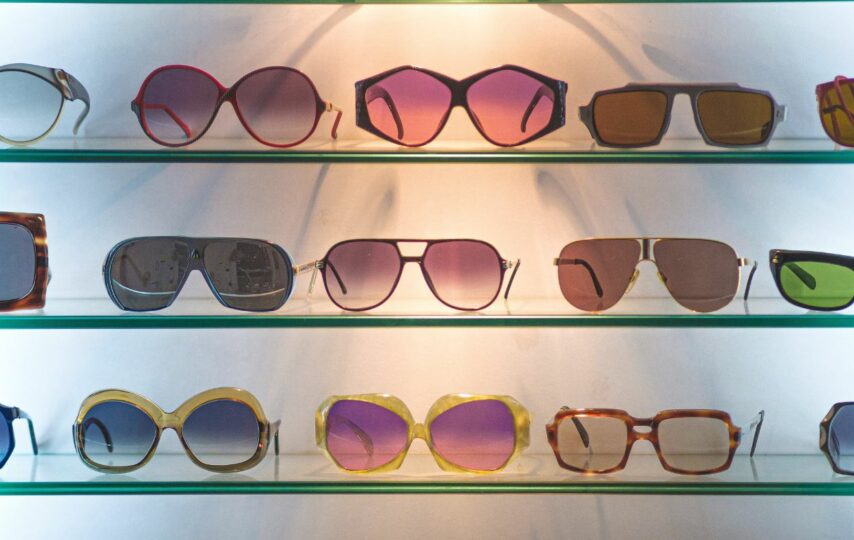In today’s competitive market for retail eyewear, a captivating and well-organized optical display can significantly impact increasing sales and attracting customers. The strategically placed placement of products for eyewear and the well-thought-out layout of the display will increase visibility, provide an appealing shopping experience, and eventually attract the customers’ attention. In this article, we’ll examine effective ways to arrange optical displays to increase customer engagement and visibility and help eyewear retailers design an attractive display of their merchandise.
What Optical Store Display Fixtures provide you?
Store display fixtures in optical stores are vital to creating an appealing and well-organized environment to display eyewear items. Utilizing various fixtures, optic stores can increase the display of sunglasses and frames, make the most of space, and improve the customer experience.
Standard display fixtures include frame towers, wall-mounted frames, frame trays, drawers, rotating stands, frames with a single frame, sunglass towers, spinner racks, sunglass wall-mounted shelves, and mirrors. These fixtures offer options to display sunglasses and frames stylishly and effortlessly.
Lockable display cabinets provide flexibility and security and are ideal for displaying different designs, sizes, and designer or high-end frames. Lighting fixtures, like track lighting or spotlights, can emphasize the frames and create a stunning visual display.
The final decision on fixtures for display in optical stores should be determined by aspects like the space available in the store, the amount and types of frames that can be displayed, the appearance of the store, and desired customer experience.
By carefully selecting and arranging displays, optical stores can make an appealing and well-organized environment that draws in customers, stimulates customers to explore the products, and increases sales.
I. Understanding the Target Audience:
Before arranging a display with optical technology, it is essential to be aware of the audience. Consider factors such as fashion preferences, demographics, and customer needs. This will inform the layout of your products and help ensure that the display will resonate with the audience you want to reach.
II. Strategic Product Placement:
Focal Points: Make focal points in the display area to attract customers to their eyes. Display eyewear that is unique or premium products, latest arrivals, or styles trending in prominent locations. Highlighting these pieces will stimulate interest and inspire customers to investigate more.
Eye Level Placement: Put the eyewear to maximize visibility. This allows customers to see and test the items without discomfort quickly. Make shelves adjustable or use fixtures for display that permit easy browsing.
Sorting by Style or Purpose Classify eyewear items into distinct groups based on aesthetics, functionality, or intended audience. This makes browsing more straightforward for shoppers and enables them to quickly find the exact products they’re interested in.
III. Creative Display Techniques:
Layered Displays: Provide interest and depth through display panels that are layered. Put eyewear on different levels using risers or shelves that are multi-tiered. This adds dimension to the display and creates a visual impact.
Mannequins or styling props Include mannequins or styling props to show glasses in action. This lets customers visualize how sunglasses or glasses appear when worn and motivates them to try various styles.
Mirrors and Try-On Stations Set up mirrors and dedicated trial stations in the display space. Customers can try on eyewear quickly, increasing their satisfaction and delivering real-world shopping experiences.
IV. Lighting and Signage:
Good-Lit Displays: Proper lighting is vital to make an attractive optical display. Make sure the display is well-lit to show the highlights of the glasses. Utilize accent lighting to emphasize particular items or critical focal areas.
Clear Signage: Use clear and concise signs that provide essential information, such as brands, prices, and other distinctive selling points. Ensure that the signage is easily prominent and placed near the eyewear products.
V. Branding and Visual Merchandising:
Consistent Branding: Integrate your brand’s identity into the optical display with uniform branding elements like colors, logos, and fonts. This increases the brand’s recognition and improves the overall image of your store.
Visual Merchandising Strategies: Use efficient visual merchandising strategies, including harmony, color coordination, and storytelling uses props. These methods enhance the visual appeal of your display and help create an attractive shopping environment.
Conclusion:
A well-designed optical displays can be an effective instrument for attracting customers and increasing sales in eyewear retail. By understanding the customer’s needs and strategically placing the products employing innovative display strategies such as improving lighting and signage, including branding and visual merchandise, retailers can increase the visibility of their displays and provide a memorable shopping experience. With these methods, eyewear retailers can turn their displays of opticals into attractive showcases that attract customers and highlight the distinctive characteristics of their eyewear items.








